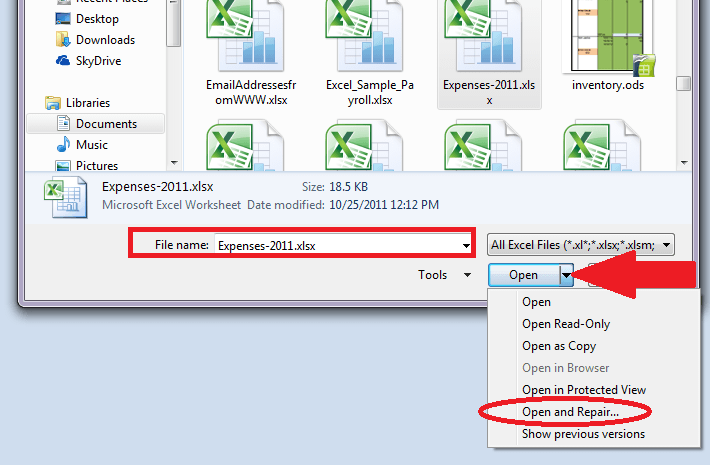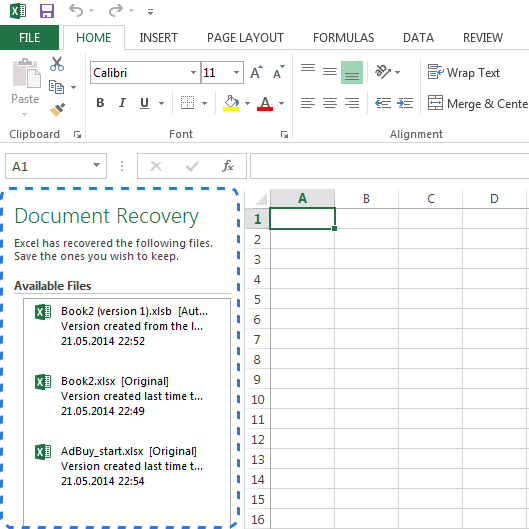Excel Links Not Working - The Facts
Wiki Article
Some Of Excel Links Not Working
Table of ContentsNot known Details About Excel Links Not Working Rumored Buzz on Excel Links Not Working8 Simple Techniques For Excel Links Not WorkingThe 45-Second Trick For Excel Links Not WorkingThe Definitive Guide for Excel Links Not Working

However, array estimation functions like either can not handle entire column referrals or determine all the cells in the column. User-defined features do not instantly identify the last-used row in the column and, consequently, regularly compute whole column recommendations inefficiently. It is simple to program user-defined functions so that they acknowledge the last-used row.

All about Excel Links Not Working
Utilizing the formula for a dynamic array is normally more suitable to the formula because has the disadvantage of being an unstable feature that will be determined at every recalculation. Efficiency lowers since the function inside the dynamic range formula have to examine several rows. You can lessen this efficiency decline by saving the component of the formula in a different cell or defined name, as well as after that describing the cell or name in the dynamic range: Counts!z1=COUNTA(Sheet1!$A:$A) Offset, Dynamic, Variety=OFFSET(Sheet1!$A$ 1,0,0, Counts!$Z$ 1,1) Index, Dynamic, Variety=Sheet1!$A$ 1: INDEX(Sheet1!$A:$A, Counts!$Z$ 1+ROW(Sheet1!$A$ 1) - 1,1) You can additionally use features such as to create dynamic varieties, yet is volatile and always determines single-threaded.
Making use of multiple dynamic varieties within a single column needs special-purpose counting features. Using several vibrant ranges can decrease performance. In Workplace 365 version 1809 and later on, Excel's VLOOKUP, HLOOKUP, as well as suit for specific suit on unsorted data is much faster than in the past when looking up multiple columns (or rows with HLOOKUP) from the exact same table variety.
If you make use of the precise suit option, the computation time for the function is proportional to the number of cells scanned before a suit is discovered. Lookup time using the approximate match choices of,, and on arranged data is fast and also is not significantly boosted by the length of the range you are looking up.
Excel Links Not Working Fundamentals Explained
Ensure that you understand the match-type as well as range-lookup choices in,, as well as. The read more complying with code example reveals the syntax for the feature. For more details, see the Match method of the Worksheet, Function object. SUIT(lookup value, lookup array, matchtype) returns the largest suit less than or equal to the lookup worth when the lookup array is sorted rising (approximate suit) (excel links not working).The default option is approximate suit sorted ascending. requests a specific suit as well as thinks that the data is not sorted. returns the smallest suit higher than or equivalent to the lookup value if the lookup selection is arranged coming down (approximate suit). The complying with code example reveals the phrase structure for the as well as functions.
VLOOKUP(lookup worth, table variety, col index num, range-lookup) HLOOKUP(lookup worth, table array, row index num, range-lookup) returns the largest suit less than or equivalent to the lookup worth (approximate match). This is the default option. Table range should be arranged ascending. requests a specific suit and assumes the data useful link is not arranged.
An Unbiased View of Excel Links Not Working
If your information is sorted, yet you desire a precise suit, see Use two lookups for arranged information with missing out on worths. Try making use of the and also works instead of. Is a little much faster (about 5 percent faster), easier, and utilizes much less memory than a combination of and also, or, the added flexibility that and also offer frequently enables you to significantly save time.
The function is quick and is a non-volatile function, which quickens recalculation. The function is likewise quick; however, it is an unpredictable feature, as well as it occasionally considerably enhances the time taken to refine the computation chain. It's very easy to convert to and also. The adhering to two statements return the exact same answer: VLOOKUP(A1, Information!$A$ 2:$F$ 1000,3, False) INDEX(Information!$A$ 2:$F$ 1000, SUIT(A1,$A$ 1:$A$ 1000,0),3) Because specific suit lookups can be sluggish, think about the following options for enhancing performance: Use one worksheet.
When you can, the information first (is fast), and utilize approximate suit. When you need to make use of a specific suit lookup, limit the series of cells to be scanned to a minimum. Use tables and structured references or vibrant array names instead of describing a lot of rows or columns.
Top Guidelines Of Excel Links Not Working
Two approximate matches are significantly faster than one specific suit for a lookup over even more than a couple of rows. (The breakeven factor has to do with 10-20 rows.) If you can sort your data yet still can not utilize approximate match since you can not make sure that the value you are seeking out exists in the lookup range, you can use this formula: IF(VLOOKUP(lookup_val, lookup_array,1, True)=lookup_val, _ VLOOKUP(lookup_val, lookup_array, column, True), "notexist") The very first part of the formula functions by doing an approximate lookup on the lookup web column itself.VLOOKUP(lookup_val, lookup_array, column, Real) If the answer from the lookup column did not match the lookup worth, you have a missing worth, and also the formula returns "notexist". Be aware that if you search for a value smaller than the tiniest value in the checklist, you obtain an error. You can manage this error by utilizing, or by adding a small examination value to the listing.
Starting with Excel 2007, you can use the function, which is both basic as well as quick. IF IFERROR(VLOOKUP(lookupval, table, 2 FALSE),0) In earlier variations, a straightforward yet sluggish way is to use a function which contains 2 lookups. IF(ISNA(VLOOKUP(lookupval, table,2, FALSE)),0, _ VLOOKUP(lookupval, table,2, FALSE)) You can stay clear of the dual exact lookup if you utilize precise when, keep the lead to a cell, and after that check the outcome prior to doing an.
Report this wiki page